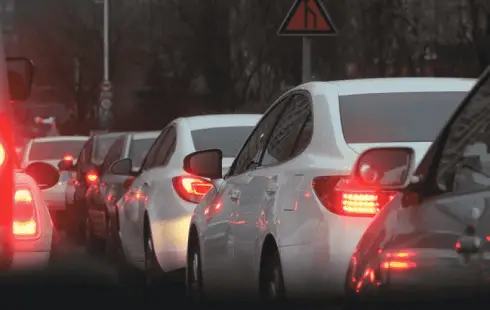
Pantone's Color of the Year an Endless Neutral Loop
Section: Fashion
 The volume of traffic jams in Germany last year remained significantly below that of the previous corona year 2019, despite a normalization of traffic. Overall, the duration of the registered traffic disruptions added up to about 333,000 hours of congestion, which is 188,000 less than in 2019 and still 13,000 less than in 2021, as the automobile club ADAC announced in Munich on Thursday. In 2021, traffic was temporarily restricted due to the lockdown.
The volume of traffic jams in Germany last year remained significantly below that of the previous corona year 2019, despite a normalization of traffic. Overall, the duration of the registered traffic disruptions added up to about 333,000 hours of congestion, which is 188,000 less than in 2019 and still 13,000 less than in 2021, as the automobile club ADAC announced in Munich on Thursday. In 2021, traffic was temporarily restricted due to the lockdown.
In total, ADAC counted 474,000 traffic jams in 2022 with a total length of disruptions of 733,000 kilometers. The mileage of cars on the highways increased by about ten percent compared to the corona year 2021.
A distinction is made between the days of the week and the risk of being stuck in traffic jams is lowest at the weekend - there were around 500 hours of traffic jams on Saturdays and Sundays. Thursday was the busiest day with around 1200 hours of traffic jams, in 2019 it was Wednesday with 1850 hours of traffic jams.
According to the ADAC analysis, the day with the highest volume of congestion was September 30 last year with 2250 congestion hours. At that time, many drivers took advantage of the long weekend with the holiday on October 3 for trips. On May 25, the day before Ascension Day, drivers were stuck in traffic for 2100 hours.
The most impressive traffic jam in terms of length occurred on Saturday, July 23, when motorists were stuck between Rosenheim and Bad Reichenhall for a total length of 44 kilometers on Highway 8 from Munich toward Salzburg. On December 15, there was a 40-kilometer traffic jam on the A8 from Stuttgart in the direction of Munich between Burgau and Dachau/Fürstenfeldbruck.
The hotspot for traffic jams par excellence in 2022 was also on the A8, where the six-lane expansion near Pforzheim led to recurring long traffic jams. Accordingly, the A8 also had the most congestion hours overall, followed by highways 12 and 3.
By state, North Rhine-Westphalia remained in first place with a share of around 31 percent of all congestion hours, followed by Bavaria with 17 percent and Baden-Württemberg with twelve percent. For this year, the ADAC expects an increase in traffic volume and thus more traffic jams.
Image by Shilin Wang

Section: Fashion

Section: News

Section: Fashion

Section: Arts

Section: Politics

Section: Health Insurance

Section: News

Section: News

Section: News

Section: Arts
Both private Health Insurance in Germany and public insurance, is often complicated to navigate, not to mention expensive. As an expat, you are required to navigate this landscape within weeks of arriving, so check our FAQ on PKV. For our guide on resources and access to agents who can give you a competitive quote, try our PKV Cost comparison tool.
Germany is famous for its medical expertise and extensive number of hospitals and clinics. See this comprehensive directory of hospitals and clinics across the country, complete with links to their websites, addresses, contact info, and specializations/services.
Join us for an enchanting Christmas adventure at the Münchner Marionettentheater! Experience the marionette play 'Der verschwundene Wunschzettel' by Siegfried Böhmke, featuring our beloved Kasperl Larifari and his little friend Stupsi. As Christmas approaches, both Kasperl and Stupsi have prepared...



No comments yet. Be the first to comment!